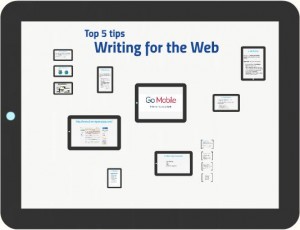Me: “Hey website, I have a question, help me answer it. How do I get to Newcastle?”
Website: “Before I do that, why not stay a while, look at our pictures; see how they glide by. We’re showcasing our city, our campus, our staff, our facilities, and our cat (oh, you didn’t stick around for that one).”
Me (scrolling quickly): “No really, just directions would do…”
Website: “Could I interest you in this video – it’s actually about the Law School, but you know, it might have a map in it, or perhaps a Virtual Tour? We’ve got a nice one of the Sports Centre: the gym is amazing”.
Me: “Er, no thanks, bye.”
Meet your supporting cast
These image galleries, videos and virtual tours have a lot to bring to your web pages.
They can provide engaging content. They help reinforce reputation and quality. They should act as support for the core content of the page.
Problems occur when they take over and try to be the star of the show.
They interrupt the flow of your carefully crafted content. They butt in. They push the priority messages out of the way.
“Most people come to the Web because there’s an information gap. Something has cropped up. There’s something they don’t know, something they need to do.”
Gerry McGovern
Prioritise web page content
We should be careful about placing too much emphasis on the supporting content in a page.
Stop this from happening by focusing on the priorities for the page. Read our blog post on Structuring Content to help you.
All our supporting content flows after the core content. On desktop it floats right or under the core message. On mobile it flows under the core messages.
This means our site users are not interrupted when trying to find the answer to their questions. The supporting content is there if they have time or want to read more, watch or listen.
“Let us not focus on getting people to spend time with our content but rather on seeing how we can save them time.”
Gerry McGovern
Supporting content examples
Supporting web content includes a whole raft of things from images to interactive virtual tours. As long as it’s relevant to the page and its placement is considered: it’s all good.
Qualifiers
Qualifiers back up our claims. They could be quotes or accolades that reinforce a core message. Partner logos and accreditation can also lend weight to statements within the content.
Images
A picture is worth a thousand words – this can be true. A good, clear, relevant photo can enhance your core content.
But, too many images can start to bring noise and distraction to the page. Consider displaying these as an image gallery. This can group together similar photography: facilities for example.
Video
Add a video if it supports the content of the page – don’t get sucked into adding videos “just because they were made”. This all represents clutter to your end user.
Virtual tours
These are a great way to showcase facilities and can help engage with your users. Again, make sure they support the context of the page.
Calls to action
Supporting content can also provide a next step.
They include calls to action like booking a place at an event. We have styled content buttons for this.
We’ve also got a suite of social media icons that can help increase visits to Facebook or Twitter.
Delete it!
Test if it really is supporting content. If you took it away would your reader still leave the page happy that they found out what they needed?
References
Gerry McGovern. The Challenge for Writers of Web Content. New Thinking. 24 May 2015.
Related posts
Image credit: magic moment by rvoegtli on Flickr



